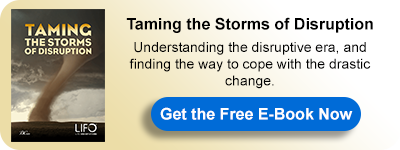The Disruptive Era: A Close-Up
The world around us is rapidly changing—thanks to digital business transformation—to a very consumer- and data-centric economy, which organizations must alter to be competitive and thrive. It’s a full-on Darwinian experience of survival of the fittest for businesses today. Never mind the massive influx of new and different data coming in from all directions; we’re all aware of it. We may not know how much the internet, smartphones, and the toy box of highly interconnected social platforms are influencing the reinvention of industries all around us.
From car insurance to media and entertainment, today’s most data-driven businesses are demonstrating that the whole industry is witnessing a moment of explosive disruption that we just cannot ignore. This can be seen in the way business models are evolving. In addition, how organizations communicate directly with their customers, the new breeds of businesses that are emerging and transforming the character of their industry.
One prominent example of the latter is Uber, a company that, according to its website, is “changing the way the world travels.” Unlike traditional taxi services, Uber uses an app to link passengers with drivers. Uber uses your phone’s GPS to determine your location and connect you with the nearest driver via a mapping and pricing algorithm that is often less expensive than metered taxis (unless you’re traveling during rush hour or on holiday) and always in a cleaner vehicle. Uber is not only altering the game for commuters in need of a speedy trip. It is also revolutionizing the taxi industry from the inside out.
Cities such as New York City, for example, offer a limited number of “medallions” that allow car owners to run taxis. Medallions with limited availability have been reported to sell for more than $1 million each. Taxi businesses recoup their investments in the old model by renting their vehicles to drivers, raising meter fees for clients, and paying as little money as possible to their drivers. Instead of requiring drivers to have a late-model car and a clean driving record, Uber just takes a percentage of each fare and distributes it to them—no million-dollar medallion required. They also provide flexibility to their drivers, allowing them to pick when they wish to drive by simply turning on or off their app. Simply said, this is data-driven disruption, transformation, and reinvention.
Hence, this concept refers to a period in which “technology and society evolve at a rate quicker than enterprises can react naturally.” Traditional markets are being disrupted overnight by new digital platforms, and customer requirements and expectations are rapidly shifting due to globalization. Organizations must foresee and respond to these external developments to survive in the current climate.2
1BDQ, 8 Apr 2016, Lindy Ryan, An Era of Disruption, Transformation, and Reinvention, Accessed 31 Dec 2021, https://www.dbta.com/BigDataQuarterly/Articles/An-Era-of-Disruption-Transformation-and-Reinvention-109290.aspx
2 CRF, 16 Nov 2017, What should learning look like in the era of disruptive change, Accessed 31 Dec 2021, https://www.crforum.co.uk/research-and-resources/learning-look-like-era-disruptive-change/
For more about this topic, download our latest book "Taming The Storms Of Disruption" for FREE:
